This is an interesting shadow pattern on my front walk.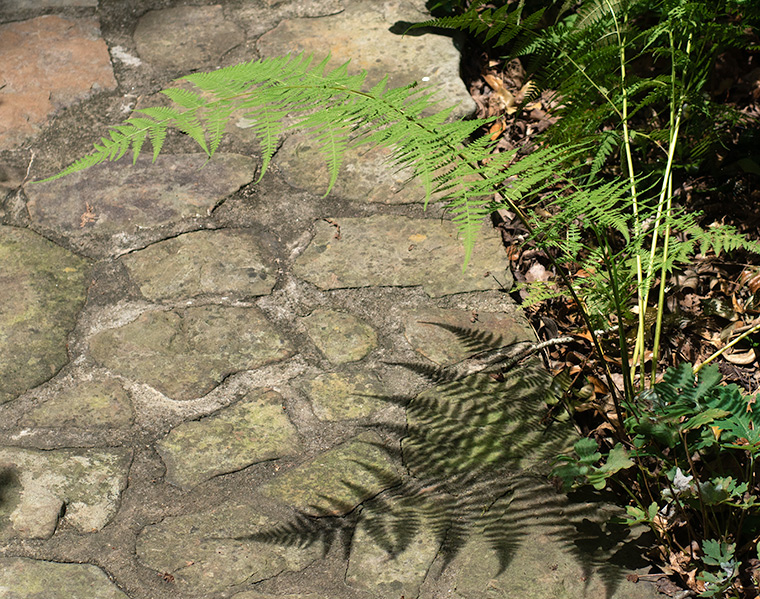
It comes,of course, from a fern growing next to the walk. I think it is a species of Dryopteris.
Ferns exhibit two different plant types during their life cycle. The large visible ferns we see, such as the one here, are the sporophytes or diploid forms (they have two sets of chromosomes) and produce spores. The other form is tiny and seldom seen. This form is called the gametophyte, and they produce sperm and eggs.
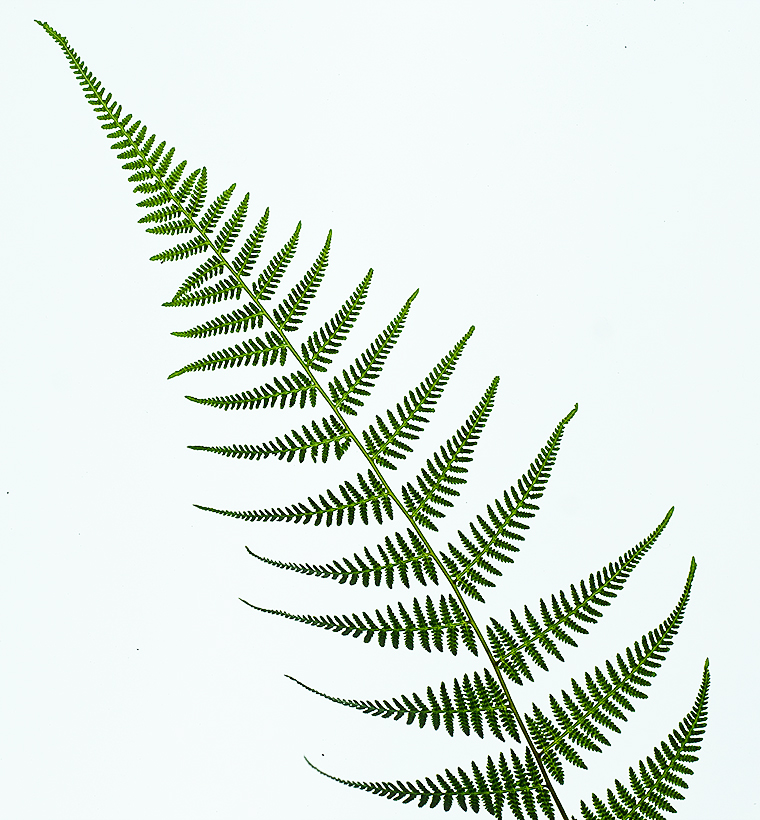 Fern leaves exhibit a very regular pattern of growth. Notice how the pattern of the leaf repeats itself in smaller and smaller iterations as you look from the base out toward the tip of the frond.
Fern leaves exhibit a very regular pattern of growth. Notice how the pattern of the leaf repeats itself in smaller and smaller iterations as you look from the base out toward the tip of the frond.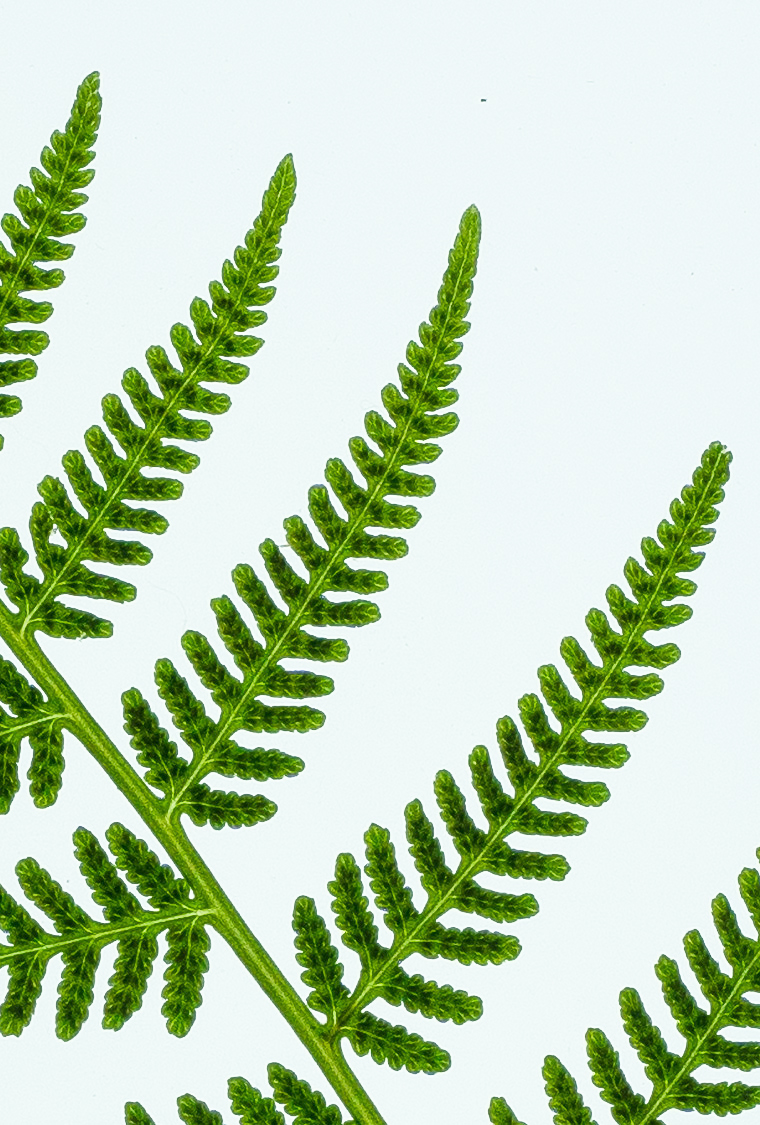
A closer look shows that each division of this leaf has rows of darker colored spots.
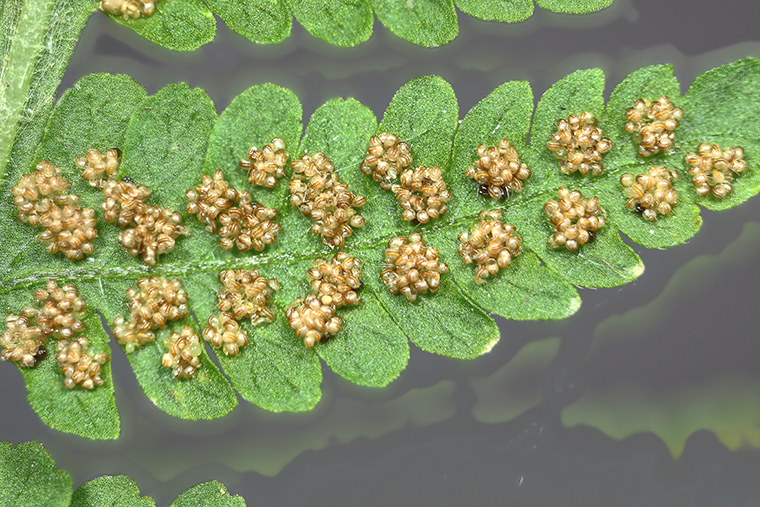
These spots are on the underside of the leaf, and they are complex structures.
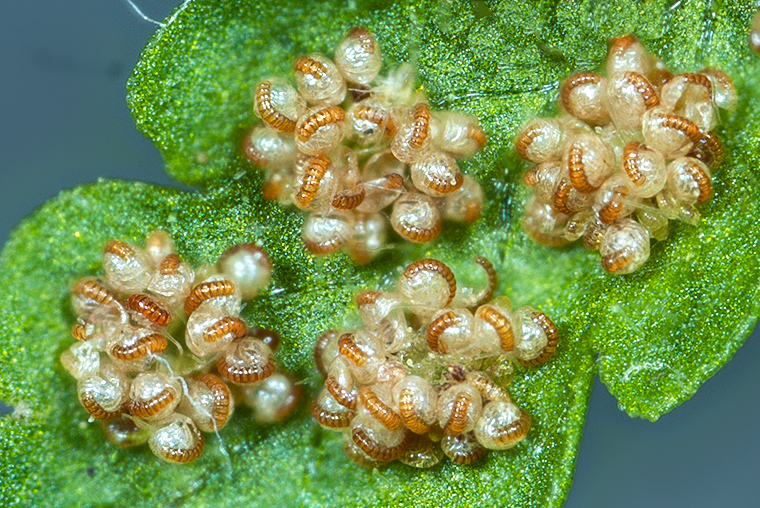
Each structure is a group of about 20 spherical structures, Such groups of spheres are called sori; each of the spheres in a sorus is a sporangium. Sporangia contain about 25 or so spores.
Each sporangium has a darker colored, striated ridge, called the annulus, over part of its surface. When the sporangium is mature, and the humidity is suitable, the annulus straightens out exerting a force on the sporangium wall. The sporangium wall breaks, and the annulus lifts the spore mass up. After the annulus has fully straightened, it flips back and catapults the spores into the air. This process is much better explained in a video. You can see a good one at this location.
If a spore ends up on a suitable habitat, it will germinate to form a gametophyte plant. Gametophytes are small, usually less than one inch. They produce sperm and eggs; these fuse to form a zygote which grows into a sporophyte. I have no pictures of gametophytes to show you, but I will try to find some for a future post.

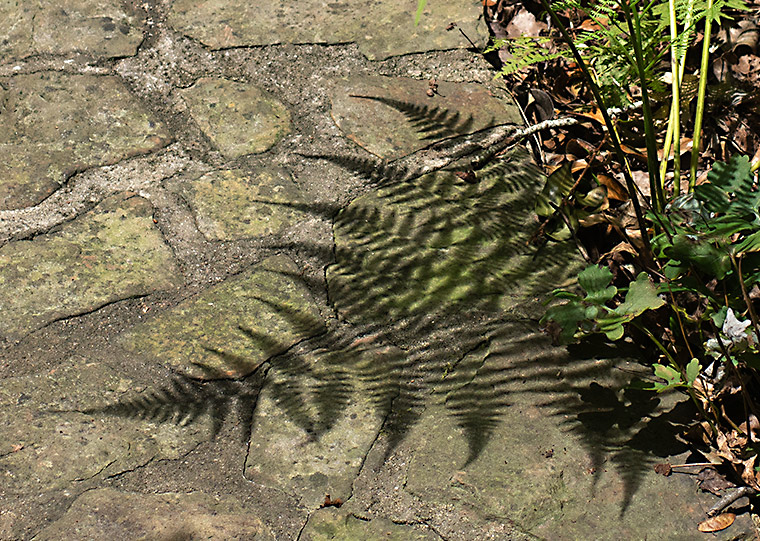
Stunning CUs Gary. You must be using that miraculous editing programme that composites shots from multiple images.
I hope you received the email that I sent in respose to your’s a couple of months ago.
Yes, I did get your email and thanks for that. The closeup pictures in this blog were done using a Stack Shot device to move the camera by small increments and to take an exposure at each stop. I used manual focus and a constant aperture. In this case 50 images were taken as the camera was moved along., Then I used Helicon Focus to analyze the photographs and extract the “in focus” parts of each image and, finally, to combined them into a singe Tiff image. A little post processing in Photoshop and that was it. The photographs in the blog are only 760 pixels wide. The full size images are 6000 pixels wide, so they are better.